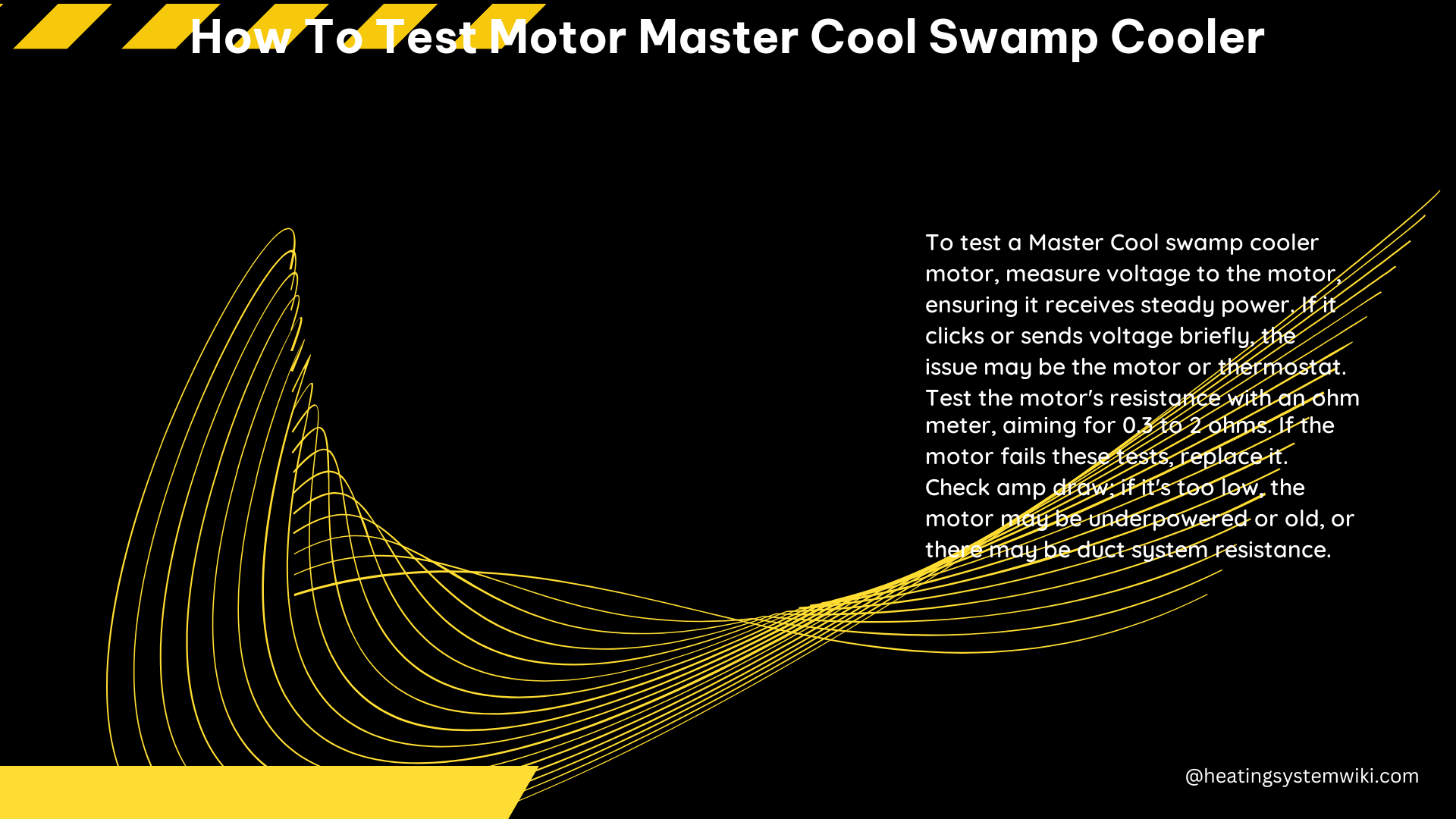Swamp coolers, also known as evaporative coolers, are a popular and energy-efficient way to cool homes, especially in dry climates. The Motor Master Cool swamp cooler is a specific model that utilizes a motor to power the fan and circulate the air. To ensure your Motor Master Cool swamp cooler is functioning correctly, it’s essential to perform a thorough test of the motor. This comprehensive guide will walk you through the step-by-step process of testing the Motor Master Cool swamp cooler motor, providing you with the technical details and specifications needed to diagnose and troubleshoot any issues.
Checking the Power Supply
The first step in testing the Motor Master Cool swamp cooler motor is to ensure that the unit is receiving the proper power supply. Begin by checking the breaker box to confirm that the breaker for the swamp cooler is turned on. Next, verify that the switch for the swamp cooler is in the “on” position. If the breaker is tripped or the switch is off, you’ll need to address those issues before proceeding with the motor test.
Testing the Motor Continuity

Using an ohmmeter, you’ll need to test the continuity of the Motor Master Cool swamp cooler motor. According to the manufacturer’s specifications, the resistance of the motor should be between 0.3 to 2 ohms. If the resistance is outside this range, it’s an indication that the motor may be faulty and in need of replacement.
To perform the continuity test:
- Disconnect the power to the swamp cooler.
- Locate the motor terminals and use the ohmmeter to measure the resistance between them.
- Compare the measured resistance to the manufacturer’s recommended range of 0.3 to 2 ohms.
- If the resistance is outside this range, the motor is likely faulty and will need to be replaced.
Checking the Voltage
Next, use a multimeter to check the voltage of the power supply to the Motor Master Cool swamp cooler motor. The voltage should match the voltage rating of the motor, which is typically 115V or 230V. If the voltage is too low or too high, it can potentially damage the motor and cause it to malfunction.
To check the voltage:
- Ensure the swamp cooler is powered on and the motor is running.
- Use the multimeter to measure the voltage at the motor terminals.
- Compare the measured voltage to the motor’s voltage rating.
- If the voltage is outside the acceptable range, you’ll need to address the power supply issue before proceeding.
Testing the Amp Draw
Another important parameter to check is the amp draw of the Motor Master Cool swamp cooler motor. According to the manufacturer’s specifications, the amp draw of the motor should be close to the nameplate amps. If the amp draw is significantly lower, it could indicate that the motor is not working properly.
To test the amp draw:
- Ensure the swamp cooler is powered on and the motor is running.
- Use an ammeter to measure the current draw of the motor.
- Compare the measured amp draw to the nameplate amps listed on the motor.
- If the amp draw is significantly lower, it could be a sign of a problem with the motor.
Inspecting the Fan
The fan is a critical component of the Motor Master Cool swamp cooler, as it’s responsible for circulating the air. Ensure that the fan is spinning freely and is not obstructed by any debris or foreign objects. If the fan is not spinning, it could be due to a faulty motor or an issue with the fan blade itself.
To inspect the fan:
- Visually inspect the fan to ensure it’s spinning freely and without any obstructions.
- If the fan is not spinning, check the motor for proper operation.
- If the motor is running but the fan is not spinning, the fan blade may be damaged or the fan bearings may be worn out, requiring replacement.
Listening for Unusual Noises
Finally, listen carefully for any unusual noises coming from the Motor Master Cool swamp cooler motor. If the motor is making strange noises, such as grinding, squealing, or rattling, it could be an indication of a problem that requires further investigation or motor replacement.
By following these steps and paying attention to the technical specifications and details, you’ll be able to thoroughly test the Motor Master Cool swamp cooler motor and identify any issues that may be affecting its performance. Remember to always prioritize safety and consult a professional if you’re unsure about any aspect of the testing process.
